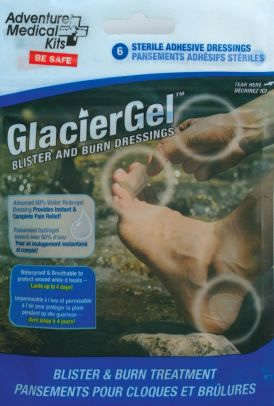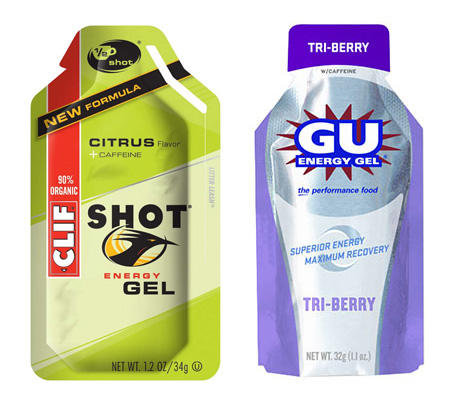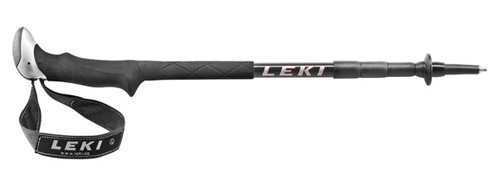Mountain Hardwear Pistolero Gloves. These gloves boast the new waterproof OutDry treatment, and I will say that this technology worked as promised — I could reach into a frigid stream with the gloves on to fill my water bottle without fear of getting wet or cold. The problem came when the Pistolero Gloves did get wet, first from perspiration and then later from the unending rain. Finally, when I slipped in a river and submerged my hands below the cuffs, they were soaked. Almost instantly, the gloves were unusable when wet inside. The inner glove swelled so much that they took several minutes just to put on right. With my swollen hands from the exertion of the race, every finger was a battle. They remained cold and wet even days after the race ended (and after hours of lying in the sunshine to attempt to dry). A waterproof glove that is useless if it does get wet? No thanks.

Adventure Medical Kits GlacierGel. Gear Junkie founder Stephen Regenold has had good things to say about the GlacierGel product in the past. These pre-cut bandages are made of a waterproof adhesive gel, and they are touted to be able to stick on and stay in place for up to four days between re-application. In the Patagonia race, I attempted to dress some wounds on my ankles and had no such luck. I tried the GlacierGel bandages repeatedly, cleaning and drying my ankle abrasions as best as the conditions allowed. The bandages stayed on only for about 30 minutes each time, rubbing off and disintegrating as we hiked.

Sweet Energy Food. After a couple days on the race, your body craves salt — not sugar. But most energy products — bars, gels, and chews — are fruity and sweet. We grew so sick of the sweet flavors after a few days that one teammate was trying to teach himself to choke down gels without the substance even touching his tongue.

LEKI Carbon 4 Trekking Poles Choosing these poles for the race was not a gear failure as much as a failure on my part to pick the right model from all the pole types offered. Before the race, LEKI gave us the choice of any poles from its varied lineup, and I opted for the lightest ones available. The Carbon 4s weigh just over 7 ounces each. The four-piece, full-carbon poles broke down small enough to fit into our packs — a huge boon during the impenetrable brush sections or when swimming. They were great for hiking, super light and (for the most part) solid for balance and propulsion on the trek. The problem? The adjustment mechanism in the telescoping pole is a twist-to-lock system, and in a race it was cumbersome and slow.

Another thing: One teammate snapped two of his Carbon 4s in the event when the poles plunged into deep moss and he fell, torquing the pole under his entire body weight before they snapped at the shaft. Nice poles overall. Patagonia was just the wrong venue for their use.
—Jason Magness is a founder of the YogaSlackers. He raced on Team GearJunkie.com in the 2010 and 2011 Wenger Patagonian Expedition Race.







